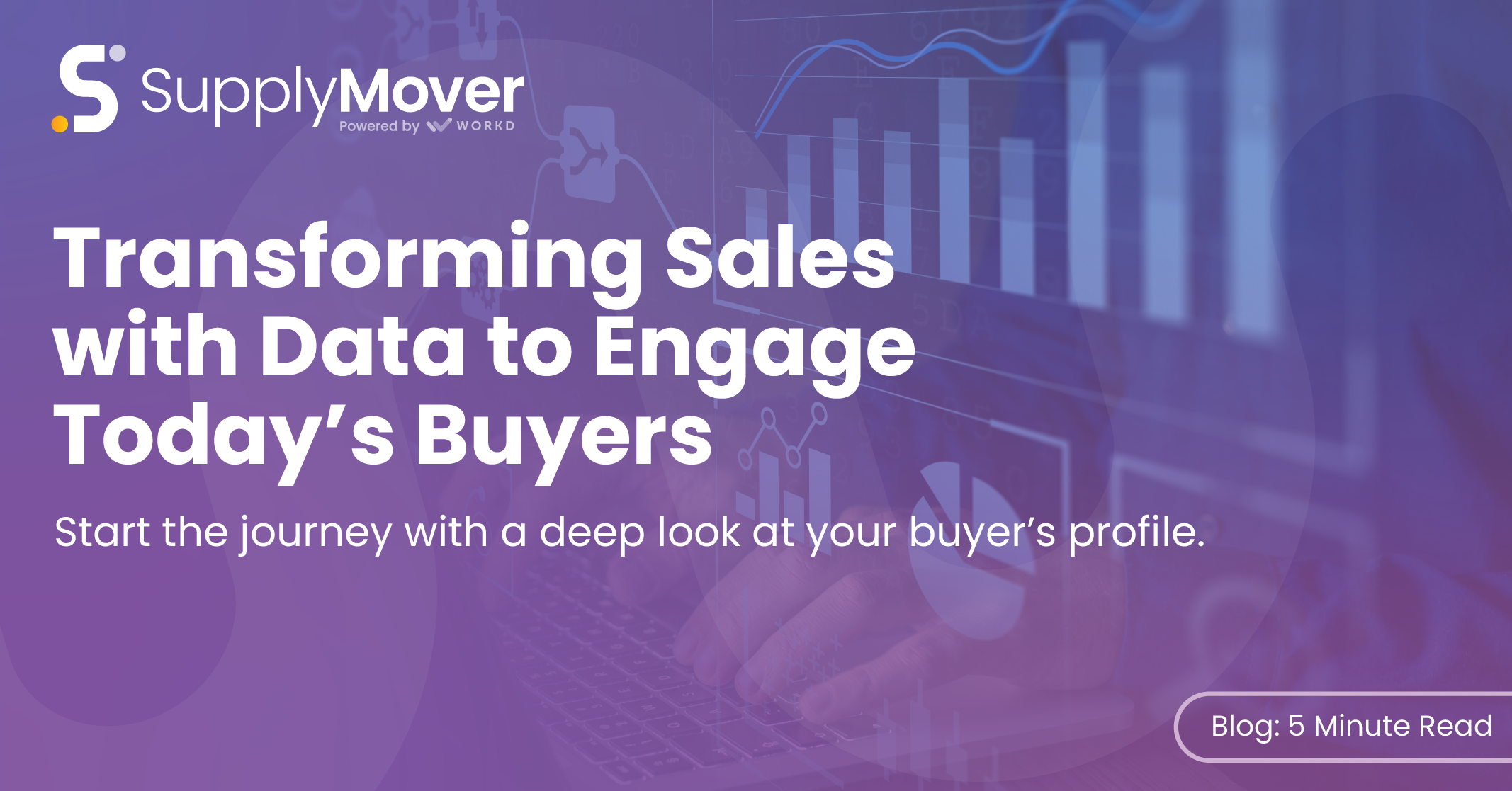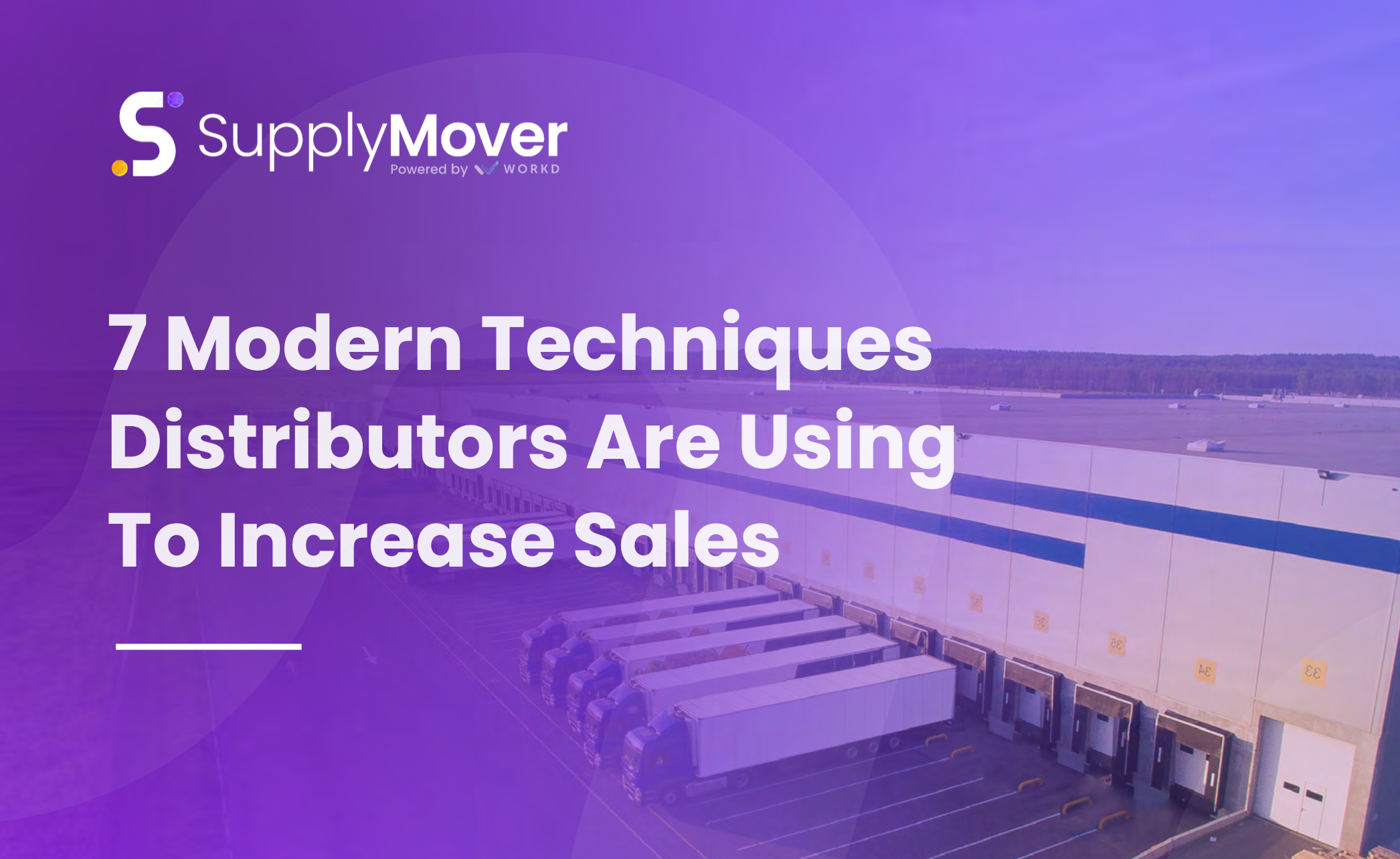Transforming Sales with Data to Engage Today’s Buyers

Even before the pandemic, many B2B sales distributors have been evolving their sales models and processes to address shifting buyer preferences, improve productivity, embrace specialization and anticipate changing buyer and seller demographics.
Many companies explored new sales-coverage models (hybrid inside/outside teams), and differentiated or separated customer service (inbound-call order taking) from outbound-calling inside sellers. Some launched business development representatives (BDRs) to specialize in new-logo acquisition. Many of these changes have improved customer experience, cost-to-serve, productivity and organic growth.
At the same time, some distributors have shopped for new sales technologies and software, like SupplyMover, to support their sellers, manage their teams and gain better visibility into sales performance. But the best strategy to help you to continue to transform your B2B distribution business into 2023 and beyond, is harnessing insights related to your current customer data.
Sales Transformation: Starting with Your Buyer
Struggles with sales transformation (including the transition to e-commerce) actually has a very clear root cause, of which poor technology adoption is merely a symptom. The root cause, in simple terms, is putting the cart before the horse. To start the sales transformation journey you have to take a deep look at the buyer (and potentially the ideal customer) profile:
- Who are the key buyer personas and committee clusters (by vertical)?
- What problems are they trying to solve?
- What are their buying processes?
- What resources or insights do they seek to advance the buying process?
- How and when do they prefer to engage sellers?
If the seller’s job is to help buyers buy more, then our efforts to design a sales process need to align tightly with buyers’ buying processes, stages and exit criteria.
Begin with the Buyer’s Needs in Mind
There is a obvious importance of helping buyers move through the buying process. Some think it’s as easy as integrating the use of e-commerce platforms, but this buyer-centric mindset must also apply as you plan all initiatives to improve sales. The buyer needs to be the North Star for all our efforts to innovate in sales processes, talent selection and development, sales enablement operating system, and last but not least, implementing sales technology.
In the context of buyer-centric sales transformation framework, it becomes obvious why so many sales transformations fail to achieve the desired outcomes: they are all putting the downstream investment “carts” before the upstream buyer “horse.” Once we reframe the sales transformation journey, the disconnect quickly resolves. With a CRM and sales enablement system, we can start with solid buyer research — and lead into documented buying process stages, resources and exit criteria. We can look through real-time reporting to identify clusters of buyers and buying processes, which support a selling process.
Align and Formalize Your Sales Process Based on the Buying Process
When the sales process(es) have been formalized to support buyers’ process(es), we can delve deeper into the downstream talent selection, training and coaching transformations. We can identify the intrinsic sales talent (“seller DNA”) as well as the extrinsic (learned) sales competencies required to successfully execute the specified sales process. We sharpen the “fit” between sellers and roles, building high levels of sales readiness to support the sales process.
With the right people in the right seats on the bus, we can then focus on the supporting sales enablement system: the prescribed manager activities, competencies, coaching, KPIs, customer management etc.
Bridge the Gaps Between Sellers and Buyers
Companies that rigorously research their buyers, align and formalize their sales process, and master the supporting sales enablement systems, are in the best position to achieve their sales goals. They have the ability to implement sales tools and technology like SupplyMover, that increases customer value, accelerate seller performance and drive business outcomes and ROI. When you can visualize and study your data, sellers can understand their buyers and know how to serve them on a daily basis. Managers have clear systems, playbooks and KPIs to apply a continuous-improvement model. Sales enablement technology and being in tune with your customer data is necessary to advance in 2023.
Reorient Your Sales Transformation
In the end, the modern, buyer-centric sales transformation requires greater maturity, focus and seriousness. It requires a new buyer-centric perspective, systems thinking and focused time and work. Integrating technology that can help you visualize customer data, can help you to become a better seller.
Get SupplyMover
SupplyMover is best-in-class CRM and sales enablement software ready to empower your team and get sales moving. With robust KPI and reporting functionality, SupplyMover allows you to set individual goals for individual team members—no more of this one-size-fits-all business. And it allows you to slice and dice the data anyway you want in whatever format you need, so you can see how things are going today, this month, or this year.
Schedule a 15-minute discovery call to learn more about how SupplyMover can impact your bottom line.





